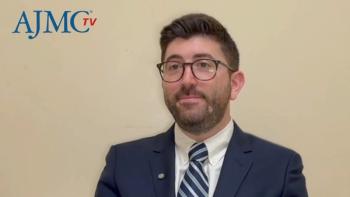
COA's Dr Miriam Atkins: PBMs, HR 5526, and Marketplace Strategy
Miriam J. Atkins, MD, FACP, president of the Community Oncology Alliance, discusses the impact of pharmacy benefit managers (PBMs) on health care costs and offers potential ways to remedy certain CMS decisions that negatively affect oncologists and their patients.
For insurance companies, their bottom line is the data, and they're not thinking about the patient when they implement some of these rules, said Miriam J. Atkins, MD, FACP, president of the Community Oncology Alliance (COA) and physician and partner of AO Multispecialty Clinic in Augusta, Georgia.
Atkins
Transcript
When PBMs leverage their care choices and insurance companies deny approval, such that costs inevitably go up for all parties involved, what are the most important steps lawmakers can take to address these issues?
The most important steps lawmakers should take is listen to the physicians who are ordering the tests and ordering the medications. We know what's going on. We know how this affects patients. For insurance companies, their bottom line is the data. They're not thinking about the patient. And there's some really ridiculous rules. I will give you one example of a patient's lymphoma. I wanted to order a PET [positron emission tomography] scan. Well, first of all, a PET scan is the standard of care test for monitoring a patient with lymphoma. I ordered 1 PET scan when he first got diagnosed, I ordered another one, I wanted to have a third one because I get them about every 4 months. They said no, his cap is 2 PET scans in his lifetime. So, I said, “you mean for this diagnosis?” No, in his lifetime. That is ridiculous.
They pretty much practice medicine without a license. They do not want to use a certain drug. Another example is there's a few drugs we use for metastatic breast cancer. There's one drug I wanted to use with my patient. And it works very well. I've had several patients with the same information, same metastatic disease, and with the same patient. The drug I wanted to use, her insurance company said no, you have to use "drug X." That is our preferred drug; so I had to give the patient something that I didn't want to give them. It will work, but I've had a long conversation with the patient. The patient's confident with me and feels comfortable with my practice, when all of a sudden, I tell them, I can't give you the drug I wanted to give you because your insurance says I cannot. That makes the patient very uneasy, because it may be minor to the insurance company, but it is a lifetime to the patient.
COA is also working to overturn CMS’ recent decision “that doctors can no longer mail, courier, or otherwise deliver medications directly to patients.” Can you discuss the importance of direct mail-order delivery of medications to patients and address how HR 5526 would work to remedy CMS’ decision?
HR 5526 would work to remedy by providing access. The bill says mail order, but also means that a patient cannot send their husband or their daughter into the office to pick up a medication for them. Many patients who are in the middle of cancer treatment don't feel well, they can't drive or don't drive, and they can't always get in. And the silly thing about this is these are not controlled substances. There's no street value for chemotherapy product. But if I want a prescription for a narcotic at the drugstore, anybody can go pick it up for the patient. That doesn't make any sense.
What are some of your key takeaways on how your role as a medical oncologist has evolved from when you first started practicing to now, and as COA president and co-chair for the COA Patient Advocacy Network, how you are using that experience to increase awareness of PBMs’ actions in the marketplace?
I've been doing oncology for 30 years and the last 26 years in private practice. I was in the military first. And at the beginning, could just be the doctor. I could see my patients and take care of my patients; I could be the doctor. Now I have to be the doctor, the social worker, the referee fighting insurance companies; it’s a lot of hats. I would like to just be the doctor, which is what I was trained to do. As the president of COA, I have lots of opportunities to meet people on Capitol Hill and meet some of our leaders to express these things. I am no longer the medical co-chair for CPAN [COA Patient Advocacy Network]. I was before I got this position. But that's a unique position also because we work directly with patients to teach them about advocating for themselves and for other patients. So, the 2 roles go hand in hand.
Newsletter
Stay ahead of policy, cost, and value—subscribe to AJMC for expert insights at the intersection of clinical care and health economics.









































